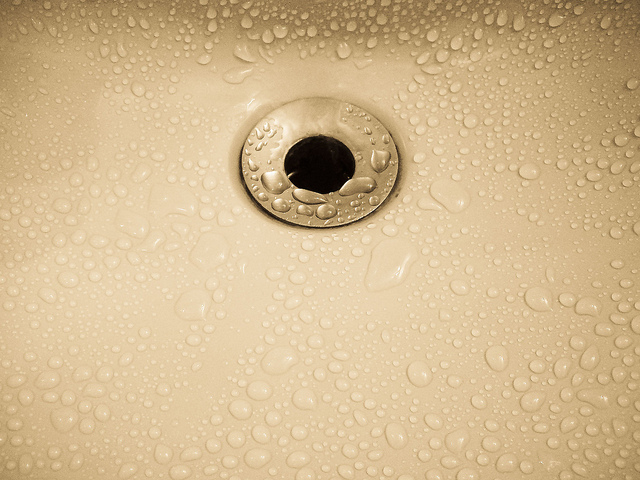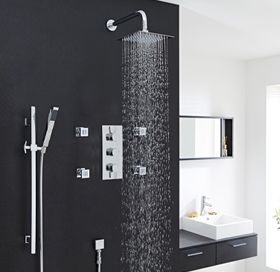A sink that takes a little longer to drain can be a sign that you may soon be facing a clogged drain. Luckily, we’ll share 3 ways to unclog a slow running bathroom sink drain, including: using natural solvents, using a plunger and snaking the pipes.

Image Source: Flickr
Using Natural Solvents
A clogged or slow-draining bathroom sink is a common problem in most homes. It shouldn’t happen too often, but when it does, use this natural formula to remove all the gunk (believe me, you don’t want a list of what that “gunk” actually is!) and get that drain in tip top shape.
What You Need
Materials:
- 1/2 cup Baking soda
- 1/2 cup Vinegar
- Lemon juice (optional)
- Measuring cups
- Remove the drain cover. Most drain covers thread into the drain, so try unscrewing it by turning it to the left.
- Measure out a 1/2 cup of baking soda.
- Dump as much of the baking soda as you can down the drain.
- Measure out a 1/2 cup of distilled white vinegar and pour it down the drain over the baking soda.
- The mixture will bubble and fizz (like the volcano experiment when you were in grade school!) and eat away anything that is clogging the drain. If you notice any unpleasant smells, squeeze a little lemon juice down after you’ve rinsed any remaining baking soda and vinegar away. Source: ApartmentTherapy
Using a Plunger
- Make sure there is standing water – if there isn’t already standing water, fill the basin with two or three inches of water.
- Create a vacuum – air vents and adjoining drains should be sealed. It is necessary to create a vacuum so the water in the drain can force the clog to move down the pipe.
- Cover drain with the plunger suction cup– place the suction cup of the plunger directly over the drain making sure to cover it completely.
- Push & Pull – use both hands to apply as much force as possible to the suctioning. Pulling is just as important as pushing. The key is to get the clog moving; the direction isn’t important. Source: About
Snaking the Pipes
- Get your materials ready.This method is for those stubborn clogs and therefore requires more materials, including a bucket, screwdriver or wrench, and plumber’s snake (also called a drain snake).
- Place the bucket underneath your sink.You want to position the bucket underneath the P-trap, that is, the curved part of pipe that leads directly from the drain.
- Check to see what is holding your P-trap together.Some are held together with screws, in which case you need a screwdriver, while others have slip nuts on both ends of the pipe, in which case you will need a wrench.
- Remove the P-trap. Do this step slowly and make sure the bucket is still positioned directly beneath you. Standing water as well as the small pipes inside of the P-trap may spill out and you want the bucket to catch them.
- Find the clog.First check the P-trap. If you can see the blockage, use your fingers, coat hanger, or the plumber’s snake to force it out.
- Reattach the P-trap. Use either the screwdriver or wrench and turn the screws or nuts clockwise to tighten them.
- Turn on the sink.The water should drain at its normal speed if the clog has been effectively removed. Source: wikiHow
Contact:
Eago Parts
Phone: Toll Free 1-888-556-1912
Calgary, Alberta
Email: info@eagoparts.com






